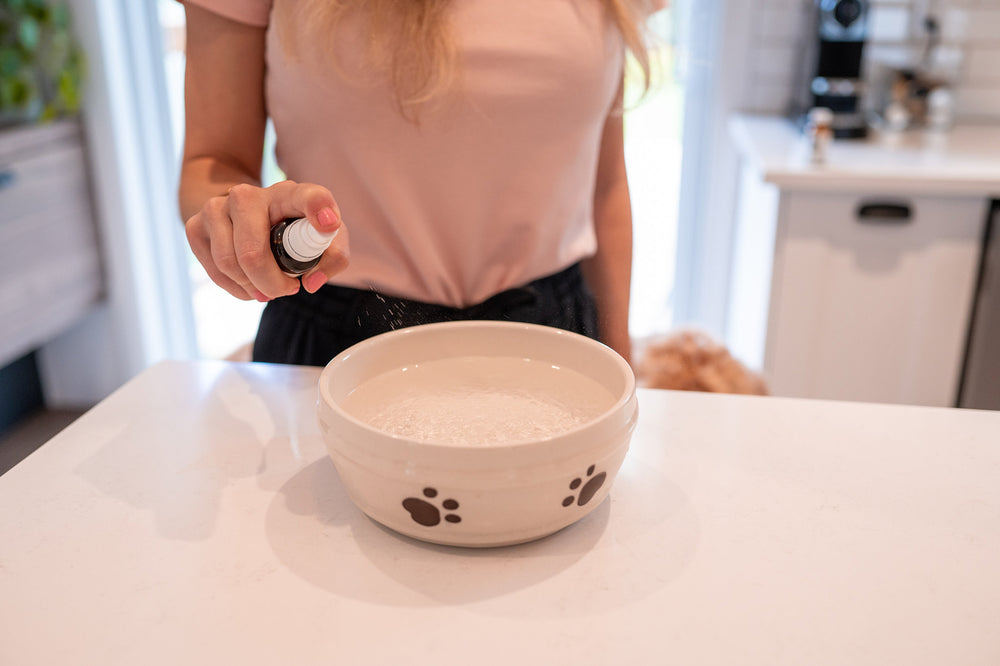Bringing Your New Pet Home: The Ultimate Guide To Pet Adoption 2023
So you're already bringing your new furry friend home! This is the time when the not-so-fun, but crucial parts of pet adoption will come in. Don't worry because we'll walk you through the important things to keep in mind when you follow along.
A Quick Chat About Westin for Context
When we got our newly adopted goldendoodle, Westin, the first few hours were pure bliss. He was shy at first...but then he started to enjoy exploring our home. Needless to say, just like any pup, he did manage to get into things he wasn’t supposed to play with (even though we puppy-proofed our home)! So what should you do when you adopt a pet and this happens?
Living with Adoptable Pets is Mostly About Adapting

Bringing your new animal companion home is not the end of the adoption process. It is actually a time for change and adjustment for the whole family. Although known as the "honeymoon period," it's also possible that it can be the other way around if we look at the whole thing from a more realistic perspective. Taking in adoptable animals in your home is all about being prepared for lots of change.
Properly Preparing Your Home is the First Step

There are a lot of ways you can make your new animal friend feel right at home. And we don’t just mean getting the right pet supplies! Make sure you have all the necessary preparations taken care of way before your fur baby arrives from the animal shelter or rescue. Remember, making your home the right place is essential in pet adoption.
Have Proper Introductions in Your Checklist

Whatever type of furry friend you’re getting, you have to guide him to properly adjust to living with you. This means that you may have to take certain things slowly and easy. The first few days with you and your household can still be bewildering even from a friendly pet’s point of view.
So how do we go about proper introductions? It is actually rather simple. Make sure he meets the members of your family and bond with them.
A few useful tips you should know
Here are some cool tips from Jessica Martin, the Director of Healthy Pets of NYC Incorporated as regards proper introductions:
When you have a baby at home: Let the dog hear and smell the baby from a safe distance first. Introduce the baby to him in a safe environment after a few days (if possible, both mom and dad are present). A quick sniff and you are done. Slowly add more time.
When you have other dogs: Let them smell each other from afar. It's a good idea to keep them in separate rooms or areas for a couple of days. The most straightforward way to help them get used to each other is by taking them out for a walk together. Allow them to have supervised bonding times that get progressively longer as you go along.
Additionally, this strategy also works for cats. They are highly territorial so any new home is a major change from a kitty’s perspective.
Set Boundaries for Pets (A Total Change from Local Shelters and Rescues)

Did you know that bad pet behavior is a product of the pet parent’s failure to set boundaries right from the very first day? Whether you adopt from animal shelters or rescue groups, not to mention organizations like ASPCA, PetSmart charities and Happy Tails, the following tips from Beagle 911 will help you get on the right track:
-
Do not give dogs full roam of the house immediately after adoption.
-
Restrict a pup or a dog in a room where you can constantly monitor him.
-
Should you leave, confine him to a single area, such as the kitchen.
-
Slowly expand his access to the whole house after a few days.
Note: If your new dog is a male, have a leashed tour of the house first. If he starts to lift his leg, give a tug on the leash and say “NO” very sternly, then proceed to the next piece of furniture. Only let him have the run of the house when he no longer wants to mark his "territory." This way, you're already setting boundaries immediately.
Start Training Your Pet ASAP!

When you adopt a pet from local shelters or rescues and organizations like ASPCA, training is something you'd have to do right off the bat. This doesn't just apply to dogs and cats (yes, cats can be trained, too), but also to other types of pets as well.
Contrary to popular belief, "training" isn't just about teaching tricks. It also means instilling ground rules, when to expect dinner, when to play, when not to bother you, and how to relate to other pets and people. Seeking professional help with this part is also recommended.
Be Ready to Address Behavioral Issues

Behavioral issues can sometimes arise because you have some sort of misunderstanding as to how the animal should behave. If we're being honest, let’s not discount the fact that the majority of these issues could have been easily prevented or corrected if only the pet parent knew what to keep in mind.
First off, a lot of behavioral issues can be a sign of underlying health problems. Instead of putting the blame on dogs, cats and other pets, stop and consider the possible reasons why the pet could be doing this. Scheduling a visit to the vet is a smart move.
If a cat stops using its litter box, it can be a sign of medical problems such as kidney stones (or the litter box needs some serious cleaning!). Another scenario is that the pet now hates being picked up. It's possible that a cat or dog could have rheumatoid arthritis and being picked up hurts so bad..
If things seem to be overwhelming already, contact the place where the animal was up for adoption. A quick way to do this is by making an online search wherever you may be in the country. Staff from shelters and rescue volunteers will be happy to help.
Sometimes the solution may just be as easy as a bit of training/retraining as recommended by our animal expert friends Keyria Lockheart from Last Hope Cat Kingdom, Robin Crowley of Rover Rescue, and Anne Fifield of Basset Rescue Across Texas.
Giving the Gift of Life
When it comes to adoptions and the search for loving homes, the main goal is to change an animal’s life for the better. In the process, you're also giving yourself the gift of a richer life filled with love and affection. Isn’t that the best gift ever? (Having the right emergency kit is also a must for unexpected situations.)







Thanks for sharing!
Thank you for sharing, I found very useful info here, I was delighted to find this web site. Excellent post.
Leave a comment